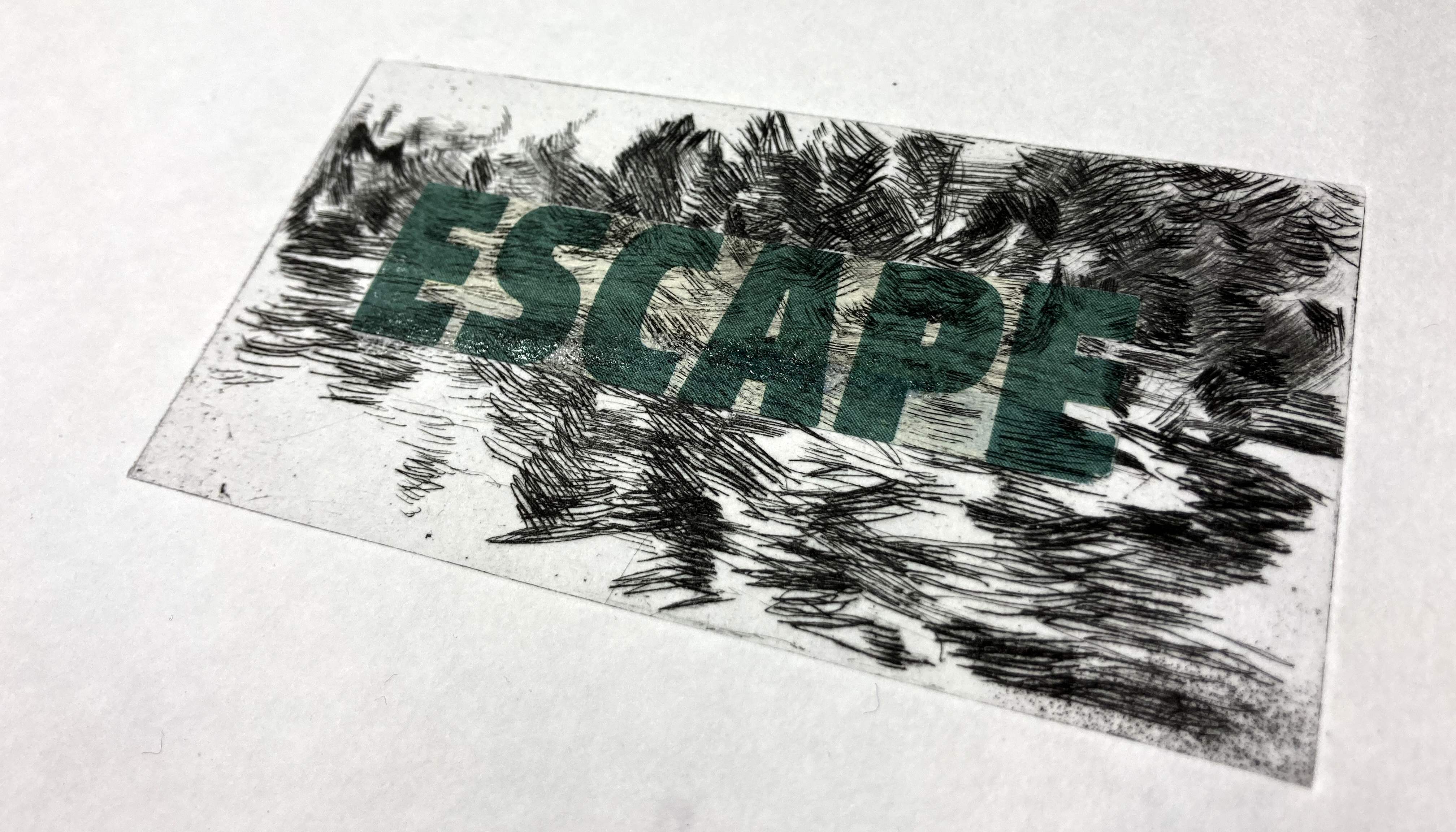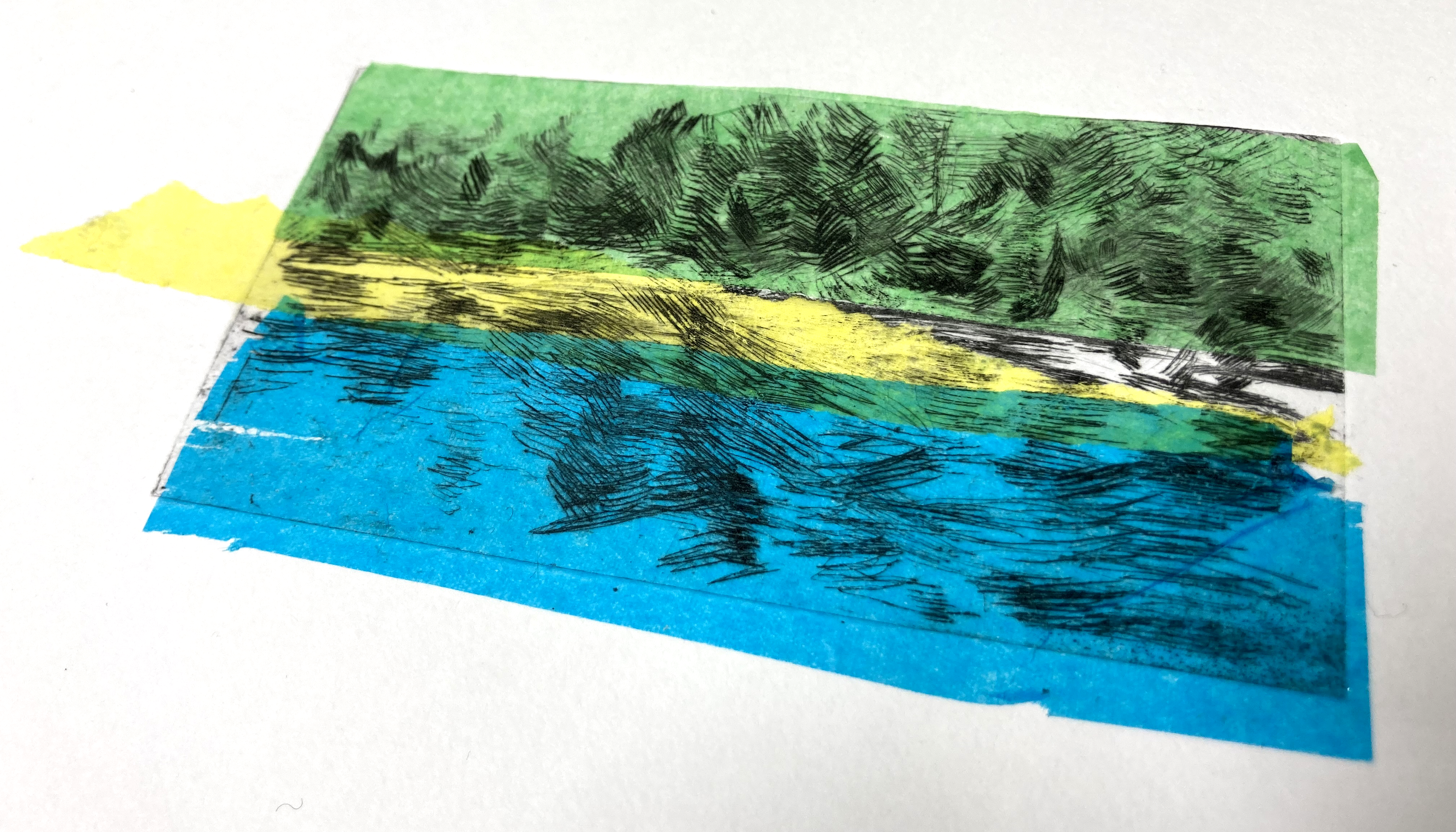Drypoint Etching
Drypoint Etching is an intaglio method of printing, involving engraving a drawing into the surface of a smooth plate. This is traditionally copper or steel, but can also be a sheet of plastic. Using a series of tools, such as needle points and pattern making roulette wheels, a design is scratched out manually. You can vary the density of the lines by applying varying degrees of pressure, or build up tones through crosshatching. A sticky ink is then applied to the plate, dabbed down into the marks made, and the excess wiped away with a soft cloth. Damp paper is then laid on top of the plate and both are run through a press to take an accurate impression, which in this case prints in reverse.
ETCHING TOOLS AND TECHNIQUES:
ETCHING NEEDLE
A sharp stylus used to etch into the surface of a plate. You can use a varying amount of pressure when you draw to create a range of tones in the final print, or build up tone through contouring, cross hatching and stippling.


ROULETTE WHEEL
A fun tool used to create a line of more uniform marks by rolling a drum with a set pattern over your plate. You can play around different roulettes for dots and lines in a range of sizes and densities, there’s even an egg shaped one that gives you an irregular pattern!
SANDPAPER
For smoother sections of tone, or to rough up larger areas of your plate you can experiment with using sandpaper to scratch the surface. By using a selection of grits you can create a wide range of styles. You can also lay the sandpaper face down onto your plate and draw onto the paper backing to punch holes into the plate and transfer a design.


MASKING TAPE
Flat areas of tone are quite difficult to produce in drypoint etchings, but you can apply sections of masking tape to the plate as a tonal effect. The nice thing about this technique is that you can remove the tape if you don’t like the result without marking the plate, or even carefully score and take off specific parts using a sharp scalpel.
CHINE COLLE
This is a collage technique where you can apply coloured tissue paper or newspaper cuttings underneath your printed image. It’s a great way to try out different compositions and variations without altering your original plate.

